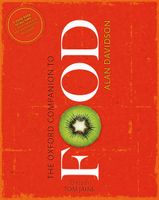Advertisement
Kibbeh
Published 2014
The grain is burghul (bulgur wheat) in most places but often rice in Iraq, particularly in the south, where fish may replace lamb. In some places the grain predominates over or even supplants the meat. The mixture is traditionally pounded in a large mortar (jurn) carved into a block of stone several feet high with a correspondingly large pestle (mudaqqa) held vertically in both hands. The aim is to achieve a perfectly smooth mixture in which none of the ingredients may be detected. Making it by the traditional process can take several hours and in villages the sound of kibbeh being pounded can be heard throughout the afternoon.


